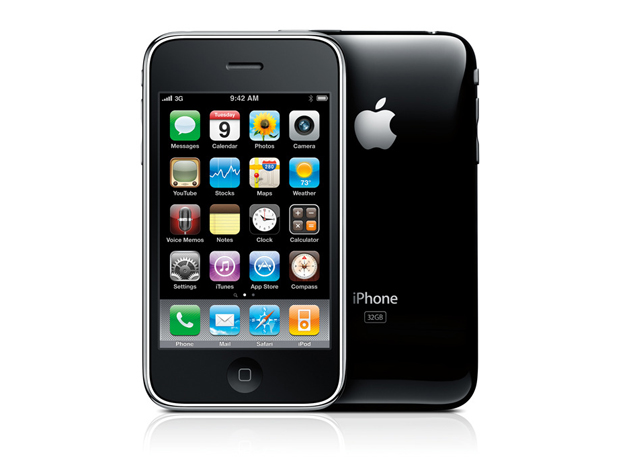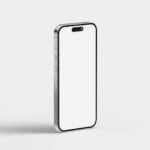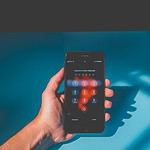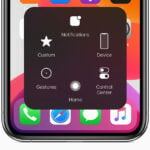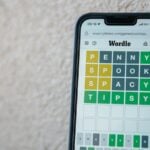The iPhone 3G marked a significant leap in smartphone technology when Apple unveiled it in 2008. This second-generation iPhone brought 3G networking, GPS capabilities, and support for third-party applications, revolutionizing the mobile experience. Apple’s innovative device featured a 3.5-inch display with 320×480 resolution, providing users with a crisp visual interface for browsing the web and using apps.
Under the hood, the iPhone 3G packed impressive specs for its time. It came with either 8 GB or 16 GB of storage, allowing you to store your favorite music, photos, and videos. The device ran on iPhone OS 2, which later evolved into iOS, and introduced the App Store, opening up a world of possibilities for users and developers alike.
Apple’s attention to design was evident in the iPhone 3G’s sleek profile. At just 12.3 mm thick, it was slightly chunkier than its predecessor but featured a curved plastic back available in black or white. This new design improved hand feel and signal reception, addressing concerns from the original iPhone.
| Feature | Specification |
|---|---|
| Display | 3.5″ (320×480) |
| Storage | 8 GB or 16 GB |
| Camera | 2 MP |
| Battery | 1220 mAh |
| OS | iPhone OS 2 |
The iPhone 3G was a significant step forward from the original iPhone. Here’s a breakdown of its key specifications:
Display:
- 3.5-inch touchscreen with 480×320 resolution at 163 ppi
- 3:2 aspect ratio
- 18-bit color (262,144 colors) LCD
Storage:
- 8 GB or 16 GB flash memory
Camera:
- 2.0 MP rear camera with geotagging
- No optical zoom, flash, or autofocus
- No native video recording (though apps were later developed to enable this)
Processor and Memory:
- Samsung 32-bit RISC ARM11 620 MHz processor (underclocked to 412 MHz)
- PowerVR MBX Lite 3D GPU
- 128 MB of RAM
Connectivity:
- 3G data (UMTS/HSDPA)
- EDGE
- Assisted GPS
- Wi-Fi (802.11b/g)
- Bluetooth 2.1 + EDR
- 30-pin dock connector
- 3.5 mm headphone jack
Battery:
- 1150 mAh, 3.7 V Lithium-ion battery
- Talk time: Up to 5 hours on 3G, up to 12 hours on 2G
- Standby time: Up to 300 hours
- Internet use: Up to 5 hours on 3G, up to 9 hours on Wi-Fi
- Video playback: Up to 10 hours
- Audio playback: Up to 30 hours
Design:
- Polycarbonate plastic housing (replaced the aluminum back of the first generation iPhone)
- Available in black and white (16 GB version)
- Slightly larger dimensions than the original iPhone: 116 mm (H) x 62 mm (W) x 12 mm (D)
Other Features:
- Accelerometer
- Proximity sensor
- Ambient light sensor
- iPhone OS 2 (initially), upgradable to iOS 4.2.1
Key Improvements over the Original iPhone:
- 3G connectivity for faster data speeds
- Built-in GPS
- App Store introduced, allowing for third-party applications
- Standard 3.5 mm headphone jack
The iPhone 3G was a popular device that helped to solidify Apple’s position in the smartphone market. It introduced several key features that are still found in iPhones today, such as 3G connectivity, GPS, and the App Store.
Design and Display
The iPhone 3G introduced a sleek design with a curved plastic back. It featured a vibrant display that set new standards for smartphone screens at the time.
Body and Dimensions
The iPhone 3G measured 62.1 x 115.5 x 12.3 mm and weighed 133 grams. This made it slightly thicker than its predecessor but still comfortable to hold.
Apple offered the device in two colors: black and white. The white version was only available with 16 GB of storage.
The phone’s body featured a plastic back instead of the aluminum used in the original iPhone. This change improved signal reception and reduced production costs.
Screen Technology
The iPhone 3G sported a 3.5-inch TFT display with a resolution of 320×480 pixels. This resulted in a pixel density of 163 ppi, providing crisp visuals for its time.
The screen utilized capacitive multi-touch technology. This allowed for precise input and supported innovative gestures like pinch-to-zoom.
Apple incorporated Corning Gorilla Glass for screen protection. This durable material helped resist scratches and minor impacts.
The display also featured an oleophobic coating. This reduced fingerprints and made the screen easier to clean.
| Feature | Specification |
|---|---|
| Screen Size | 3.5 inches |
| Resolution | 320×480 pixels |
| Pixel Density | 163 ppi |
| Protection | Corning Gorilla Glass |
| Coating | Oleophobic |
Hardware and Performance
The iPhone 3G boasts improved hardware and performance over its predecessor. It features upgrades in processing power, memory, and battery life to enhance user experience and functionality.
Processor and Memory
The iPhone 3G runs on an Apple S5L8900 processor clocked at 412 MHz. This CPU works alongside a PowerVR MBX Lite GPU for graphics processing. The device comes with 128 MB of RAM, which helps manage multitasking and app performance.
Storage options include 8 GB and 16 GB models. The iPhone 3G lacks a memory card slot, so you can’t expand its storage capacity. This limitation means you need to choose your storage option carefully when purchasing the device.
| Component | Specification |
|---|---|
| Processor | S5L8900 412 MHz |
| GPU | PowerVR MBX Lite |
| RAM | 128 MB |
| Storage | 8 GB or 16 GB |
Battery and Power
The iPhone 3G is equipped with a 1220 mAh Li-Ion battery. This non-removable power source provides decent usage times for various activities. You can expect up to 300 hours of standby time on 2G networks (210 hours on 3G).
Talk time varies depending on network usage. The device offers up to 10 hours of talk time on 2G networks and 5 hours on 3G networks. For media consumption, you get about 24 hours of audio playback or 7 hours of video playback on a single charge.
Battery life during internet use differs based on connection type:
- Up to 5 hours on 3G networks
- Up to 6 hours on Wi-Fi
These figures may vary depending on your usage patterns and settings.
Connectivity and Network
The iPhone 3G boasts advanced connectivity features. It supports multiple wireless technologies and cellular networks for robust communication and data access.
Wireless and Location
The iPhone 3G comes equipped with Wi-Fi 802.11b/g for fast local network connections. This allows you to browse the web and download content quickly when in range of a compatible router.
Bluetooth 2.0+EDR is included for short-range wireless connections to accessories like headsets and car kits.
A notable addition is GPS capability. The iPhone 3G features A-GPS (Assisted GPS) for improved location accuracy and faster position fixes. This enhances mapping apps and location-based services.
Cellular Technology
The iPhone 3G supports a wide range of cellular technologies:
| Network Type | Supported Bands |
|---|---|
| GSM | 850, 900, 1800, 1900 MHz |
| UMTS/HSDPA | Tri-band |
3G connectivity is a key feature, offering faster data speeds than the original iPhone. HSDPA (High-Speed Downlink Packet Access) provides improved download speeds on compatible networks.
EDGE (Enhanced Data rates for GSM Evolution) is available as a fallback when 3G isn’t accessible. This ensures you can stay connected even in areas with limited network coverage.
The device uses a Mini-SIM card for cellular network access. This allows you to easily switch carriers or use local SIMs when traveling internationally.
Software and Multimedia
The iPhone 3G’s software and multimedia capabilities significantly enhanced its functionality. iOS provided a user-friendly interface while supporting various audio and video formats for entertainment.
Operating System and Features
The iPhone 3G ran on iOS, Apple’s mobile operating system. iOS 4 brought multitasking to the device, allowing you to switch between apps quickly. The Safari web browser supported HTML websites, giving you full internet access.
iOS 4.2.1 was the final version compatible with the iPhone 3G. This update improved performance and added features like AirPlay and AirPrint.
The operating system included an organizer with calendar and contacts. You could view documents in various formats, making the iPhone 3G useful for work tasks.
Audio and Video
The iPhone 3G supported various audio and video formats. Its built-in iPod app let you organize and play your music library. The device featured a standard 3.5mm headphone jack for private listening.
Video playback was smooth on the 3.5-inch display. While the iPhone 3G lacked video recording capabilities, you could watch movies and TV shows downloaded from iTunes.
The phone included a loudspeaker for hands-free calls and media playback. Its audio quality was clear for both music and voice calls.
| Feature | Specification |
|---|---|
| Audio Formats | MP3, AAC, AAC+, eAAC+ |
| Video Formats | H.264, MPEG-4 |
| Speaker | Built-in loudspeaker |
| Headphone Jack | 3.5mm |
Frequently Asked Questions
The iPhone 3G brought significant upgrades to Apple’s smartphone lineup. Let’s explore its key features, specifications, and pricing details.
What are the features and specifications of the iPhone 3G?
The iPhone 3G has a 3.5-inch display with 320×480 pixel resolution. It runs on iOS and supports 3G networks for faster data speeds.
The device has a 2-megapixel camera and comes with GPS functionality. It weighs 133 grams and measures 115.5 x 62.1 x 12.3 mm.
How does the iPhone 3G differ from the iPhone 3GS in terms of specifications?
The iPhone 3G and 3GS have some key differences. The 3GS offers faster performance with its upgraded processor and more RAM.
The 3GS also has an improved 3-megapixel camera with video recording capabilities, which the 3G lacks. Additionally, the 3GS includes a compass and voice control features not found in the 3G model.
What is the release date of the iPhone 3G?
Apple released the iPhone 3G on July 11, 2008. It launched in 22 countries initially, marking a significant expansion of Apple’s smartphone market.
How much internal storage is available in the iPhone 3G?
The iPhone 3G was available in two storage options: 8 GB and 16 GB. This allowed users to choose based on their needs for apps, photos, and music storage.
What was the original retail price of the iPhone 3G?
The base model of the iPhone 3G started at 90 EUR. Prices varied depending on the storage capacity and specific model features.
Higher storage options and additional features increased the price accordingly.
What impact does the 3G network shutdown have on iPhone 3G functionality?
The shutdown of 3G networks affects iPhone 3G users significantly. You can no longer access cellular data on these devices in areas where 3G has been retired.
Voice calls and text messaging may still work on 2G networks where available. However, many carriers have also phased out 2G, rendering the iPhone 3G largely obsolete for cellular functions.
| Feature | iPhone 3G Specification |
|---|---|
| Display | 3.5-inch, 320×480 pixels |
| Camera | 2 megapixels |
| Storage | 8 GB or 16 GB |
| Network | 3G |
| GPS | Yes |
| Release Date | July 11, 2008 |
| Starting Price | 90 EUR |

